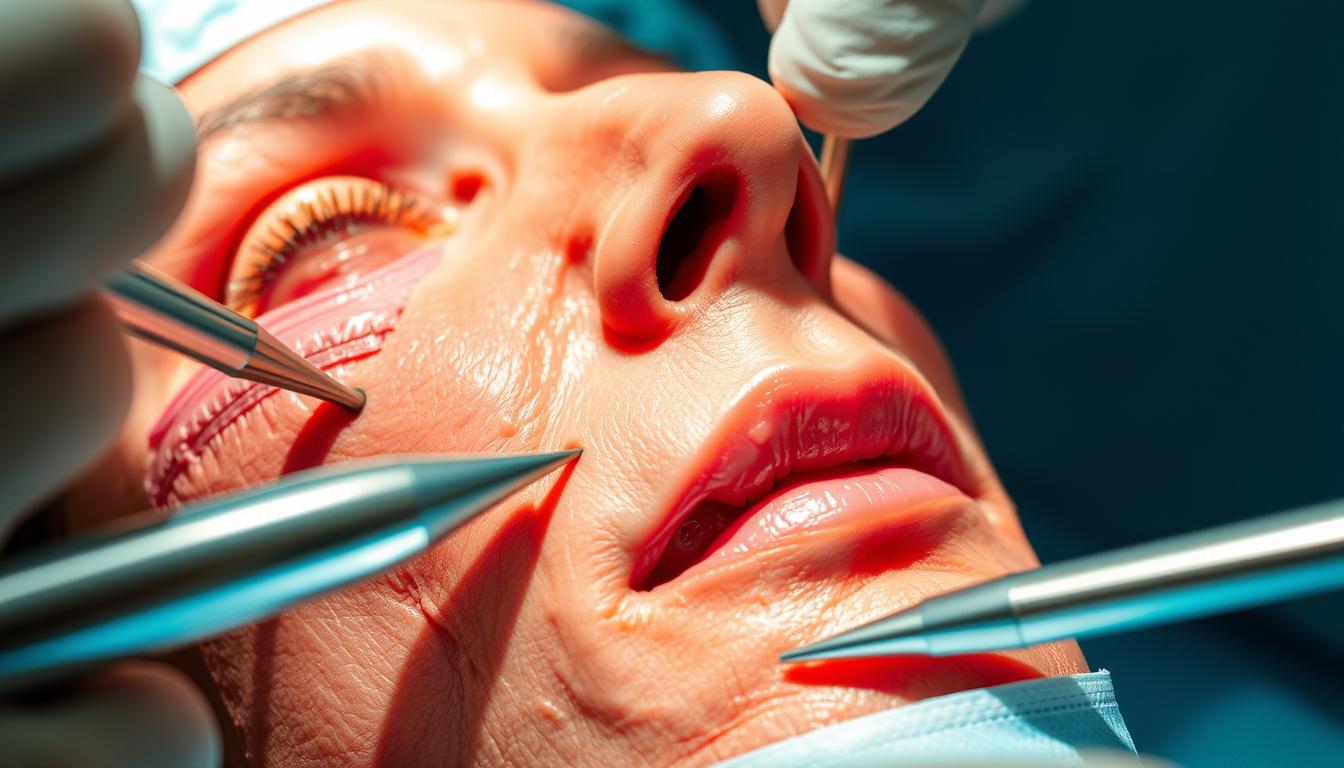Trauma, cancer, and congenital defects can significantly impact the face, affecting not only appearance but also critical functions such as the ability to blink, smile, or eat. Reconstructive surgery offers a solution by restoring both form and function to damaged facial structures.
Experts in plastic surgery employ advanced techniques to address the complex needs of patients. By focusing on both aesthetic and functional aspects, these specialists help patients regain their confidence and improve their overall health.
The impact of reconstruction extends beyond physical recovery, enabling individuals to reconnect with their sense of identity and enhancing their quality of life.
Key Takeaways
- Facial reconstruction surgery restores form and function to facial features damaged by trauma, cancer, or congenital defects.
- Advanced surgical techniques address both aesthetic concerns and critical functional aspects.
- Specialized plastic surgeons provide comprehensive care, balancing functional restoration with aesthetic outcomes.
- The psychological impact of facial reconstruction is significant, helping patients regain confidence and improve their quality of life.
- Reconstruction surgery offers a pathway to recovery, enabling individuals to reconnect with their sense of identity.
Understanding Facial Reconstruction Surgery
Surgeons specializing in facial reconstruction employ advanced techniques to repair and restore facial structures compromised by injury, disease, or birth defects. Facial reconstruction surgery is a complex and highly specialized field that focuses on restoring both the form and function of the face.
What Defines Facial Reconstruction
Facial reconstruction involves a range of surgical procedures designed to address facial abnormalities. These abnormalities can result from various factors, including trauma, cancer, or congenital conditions. The primary goal is to restore the patient’s facial aesthetics and functionality.
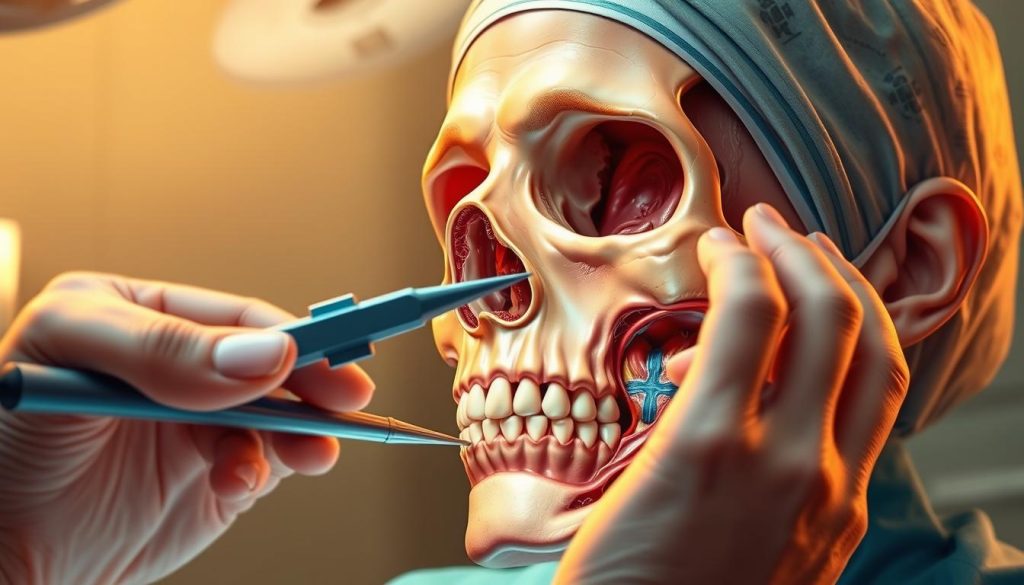
When Facial Reconstruction Is Needed
Facial reconstruction becomes necessary in several scenarios. The following list highlights common situations where reconstructive surgery is required:
- Traumatic injuries, such as severe facial fractures from accidents, compromising both appearance and critical functions.
- Post-cancer treatment reconstruction, particularly after the surgical removal of facial tumors.
- Congenital conditions like cleft lip and palate, or craniofacial abnormalities.
- Complications or unsatisfactory results from previous surgeries.
- Severe burns, infections, or disease processes causing tissue loss or facial deformity.
| Causes of Facial Deformity | Description |
|---|---|
| Trauma | Severe facial fractures or injuries from accidents. |
| Cancer | Surgical removal of facial tumors. |
| Congenital Conditions | Cleft lip and palate, craniofacial abnormalities. |
Types of Facial Reconstruction Procedures
Facial reconstruction surgery encompasses a range of procedures designed to restore form and function to the face. These surgeries are tailored to address various conditions, including those resulting from cancer, trauma, congenital defects, and facial paralysis.
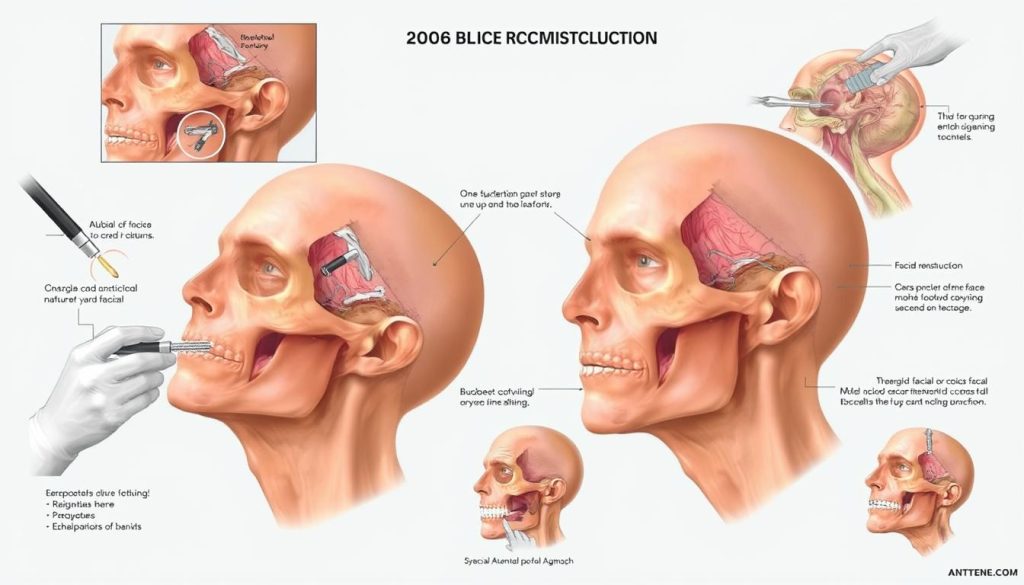
Post-Cancer Reconstruction
Post-cancer reconstruction involves rebuilding facial structures after tumor removal. Plastic surgeons use various techniques to restore appearance and function.
Trauma and Injury Repair
Facial trauma repair focuses on reconstructing damaged facial features. Facial plastic surgery techniques are employed to restore the natural appearance and functionality of the face.
Congenital Defect Correction
Congenital defect correction involves surgical procedures to repair facial abnormalities present at birth. These procedures aim to improve both the function and aesthetics of the face.
Facial Reanimation Procedures
Facial reanimation restores movement and expression to faces affected by facial nerve paralysis. Techniques include nerve grafting, dynamic muscle transfers, and static procedures to improve facial symmetry and function.
Advanced Techniques in Facial Reconstruction Surgery
Facial reconstruction surgery has evolved with cutting-edge techniques, offering patients more effective and precise solutions. Recent advancements have improved outcomes and expanded the possibilities for restoring form and function.
Microvascular Free Tissue Transfer
Microvascular free tissue transfer is a sophisticated technique that involves transplanting tissue from one part of the body to another, reconnecting blood vessels under a microscope. This method allows for the reconstruction of complex facial defects with living tissue, promoting better healing and more natural results.
Implants and Prosthetic Solutions
Custom implants and prosthetics are designed to match a patient’s anatomy, providing a more natural appearance. These solutions can be used to replace missing or damaged facial structures, such as parts of the ear, nose, or jaw, enhancing both function and aesthetics.
| Technique | Description | Benefit |
|---|---|---|
| Microvascular Free Tissue Transfer | Transplanting tissue and reconnecting blood vessels | Better healing and natural results |
| Implants and Prosthetics | Custom-designed for individual anatomy | Enhanced function and aesthetics |
| 3D Printing | Creating precise anatomical models and custom implants | Improved precision and outcomes |
3D Printing and Innovative Approaches
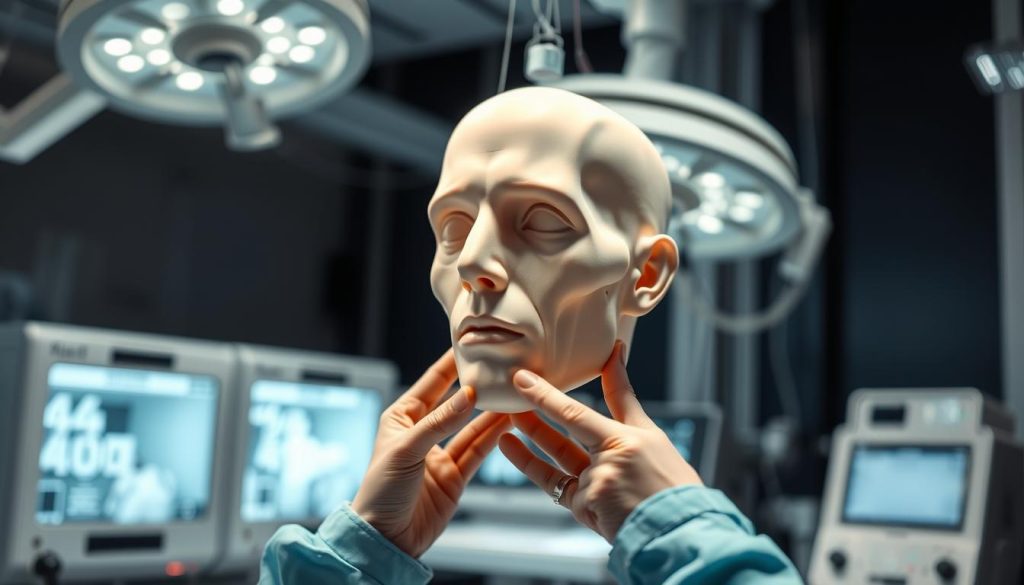 Biomedical engineers are now using 3D printing to create living, anatomically precise facial bone structures. This approach combines 3D printing with cell signaling techniques and a patient’s own stem cells, offering a promising new approach to craniofacial bone surgery.
Biomedical engineers are now using 3D printing to create living, anatomically precise facial bone structures. This approach combines 3D printing with cell signaling techniques and a patient’s own stem cells, offering a promising new approach to craniofacial bone surgery.
The Facial Reconstruction Procedure Process
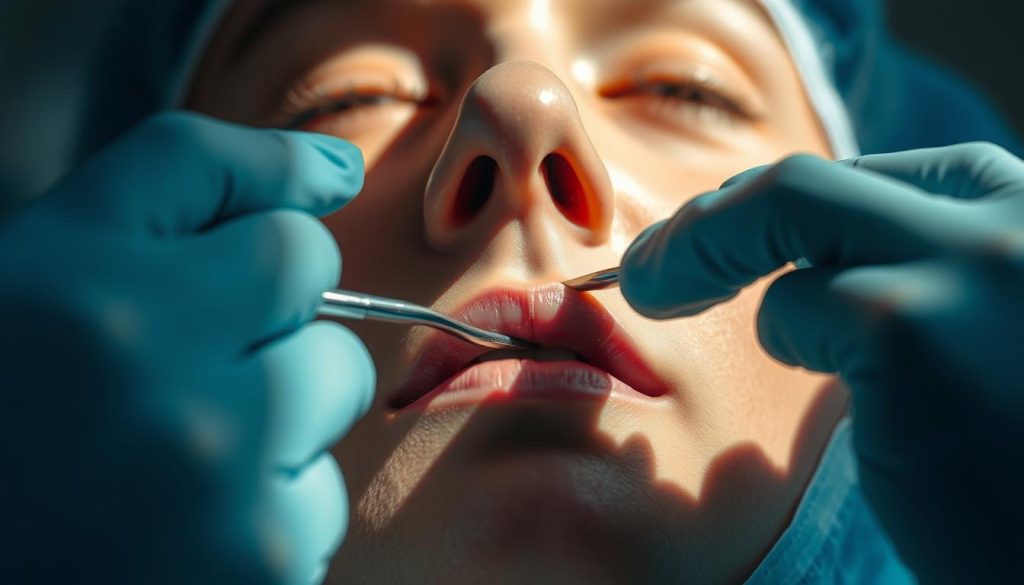
Understanding the facial reconstruction process is crucial for patients considering this surgery. The process involves several stages, from initial consultation to post-operative care, and is tailored to each patient’s specific needs and goals.
Pre-Surgical Consultation and Planning
The pre-surgical consultation is a critical step in the facial reconstruction process. During this stage, the surgeon will assess the patient’s condition and develop a personalized treatment plan.
What to Expect During Surgery
During the surgery, the patient will be given anesthesia to ensure comfort and minimize pain. The type of anesthesia used will depend on the complexity of the procedure and the patient’s overall health.
Anesthesia Options and Considerations
Anesthesia options for facial reconstruction range from local anesthesia with sedation for minor procedures to general anesthesia for complex or lengthy surgeries. The choice of anesthesia is determined by factors including the extent of reconstruction, estimated surgical duration, patient health status, and personal preferences.
- Anesthesia options for facial reconstruction range from local anesthesia with sedation for minor procedures to general anesthesia for complex or lengthy surgeries.
- The choice of anesthesia is determined by factors including the extent of reconstruction, estimated surgical duration, patient health status, and personal preferences.
- General anesthesia, administered by a specialized anesthesiologist or nurse anesthetist, ensures complete unconsciousness and comfort during major reconstructive procedures.
Recovery and Results from Facial Reconstruction
Recovery from facial reconstruction surgery is a multi-faceted process that requires careful planning, precise post-operative care, and patience. Facial plastic surgeons play a crucial role in guiding patients through this journey to ensure optimal results.
Post-Operative Care Guidelines
Effective post-operative care begins with following the surgeons’ instructions for wound care and medication. This helps in minimizing the risk of complications and promoting healing.
Timeline for Healing and Recovery
The recovery timeline varies depending on the extent of the surgery. Generally, patients can expect significant improvement within a few weeks, though complete healing may take several months.
Managing Scars and Optimizing Results
Surgeons work to minimize scar visibility by making incisions in less conspicuous areas. Proper care of these incisions and using treatments like silicone-based products can further improve the appearance of skin.
Schedule Your Facial Reconstruction Consultation Today

Take the first step towards restoring your facial form and function by scheduling a consultation with our expert surgeons today. Our team of skilled facial plastic and reconstructive surgeons offers comprehensive consultations to evaluate your specific needs and develop a personalized treatment plan for optimal results.
During your initial appointment, you’ll meet with experts who have extensive training in head and neck procedures and can address even the most complex reconstructive challenges. Our multidisciplinary approach brings together specialists in facial plastic surgery, head and neck surgery, dermatology, and other relevant fields to provide coordinated care for comprehensive facial reconstruction.
We welcome patients seeking reconstruction following skin cancer treatment, facial trauma, congenital conditions, or previous surgical complications. Our compassionate team understands the emotional and physical challenges associated with facial differences and is committed to supporting you throughout your reconstructive journey.
Scheduling your consultation is simple—contact our office by phone or through our online appointment request system to begin your journey toward facial restoration.
FAQ
What is the goal of plastic reconstructive surgery?
The primary objective is to restore both form and function to the affected area, improving the patient’s overall appearance and quality of life.
When is reconstructive surgery necessary?
It is often required after trauma, cancer treatment, or to correct congenital defects, helping patients regain confidence and normal bodily functions.
What are the different types of head and neck procedures?
Procedures can range from post-cancer reconstruction and trauma repair to congenital defect correction and facial reanimation techniques, each tailored to the individual’s needs.
How is microvascular free tissue transfer used in reconstructive procedures?
This advanced technique involves transferring tissue from one part of the body to another, along with the blood vessels, to restore damaged or missing tissue, promoting healing and natural appearance.
What can I expect during the pre-surgical consultation?
During this consultation, the surgeon will assess your condition, discuss your goals, and outline a personalized treatment plan, including the procedure, potential risks, and expected outcomes.
How long is the recovery process?
The recovery timeline varies depending on the complexity of the procedure, but generally, patients can expect several weeks of healing, with specific post-operative care guidelines provided by their surgeon.
Will there be visible scars after the procedure?
While some scarring is inevitable, surgeons use various techniques to minimize their appearance, and managing scars is an integral part of the post-operative care to optimize results.
What anesthesia options are available?
The choice of anesthesia depends on the procedure’s complexity and the patient’s health status, with options ranging from local to general anesthesia, each discussed and decided upon during the pre-surgical consultation.
